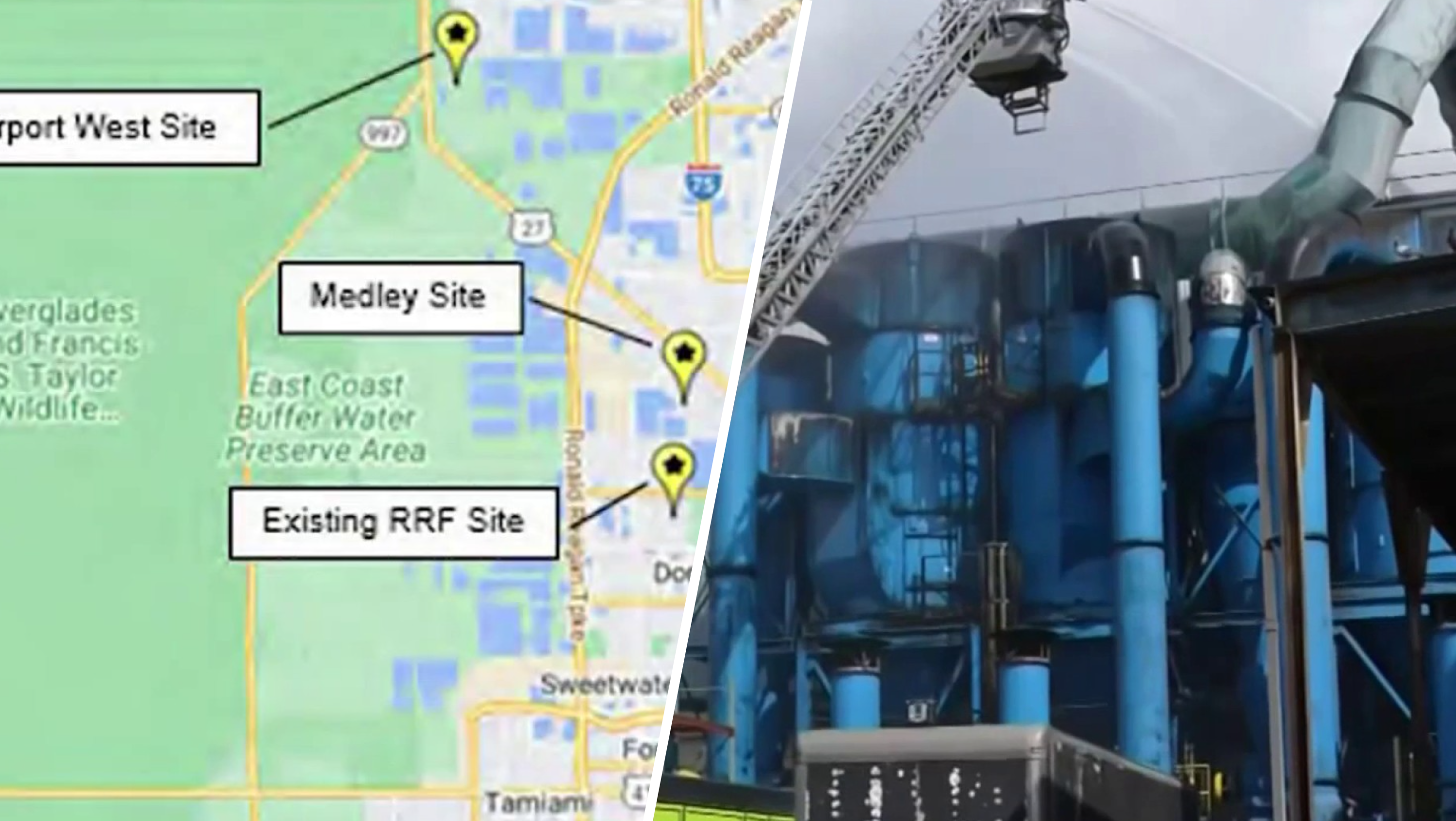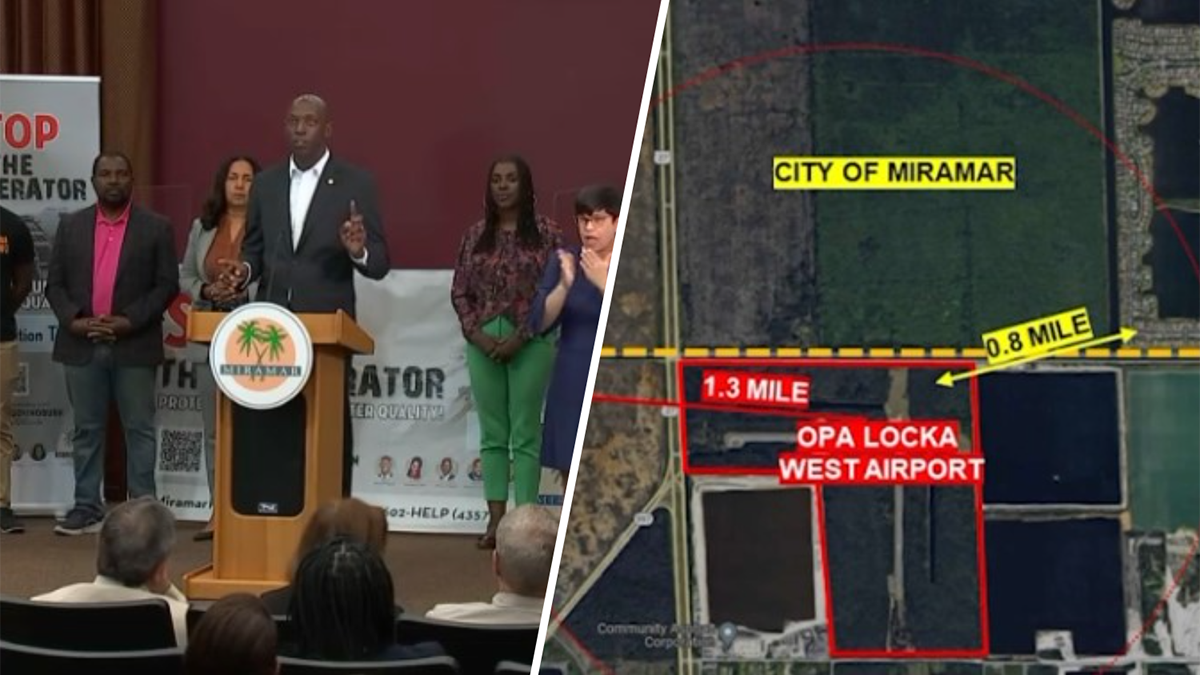The battle is on over where to put a waste-to-energy incinerator in Miami-Dade County, and a consultant’s report examining three proposed sites is giving all sides new ammunition.
Leaders from the two less complicated and challenging sites are lobbing salvos in each other’s direction, as Mayor Daniella Levine Cava has said she will delay her recommendation until September -- after she hopes to win re-election with a majority vote in August.
Watch NBC6 free wherever you are
That delay is not flying with at least one commissioner, who represents Doral, while the mayor of Miramar is saying the consultant report reaffirms why the site near his city should be off-limits.
No one welcomes the prospect of hauling and burning 4,000 tons of trash a day in their community.
Get local news you need to know to start your day with NBC 6's News Headlines newsletter.
But the fire that destroyed a waste-to-energy plant in Doral last year, along with landfills that are quickly filling up, has added urgency to the county’s plan to build a new $1.5 billion plant.
One site, called Airport West, is just south of the Broward County line in northwest Miami-Dade.
“That’s just one-eighth of a mile from Miramar, pristine wetlands, across from the Everglades,” said Wayne Messam, the mayor of Miramar, which is in Broward County. “There are tremendous environmental impacts that the report suggested as well.”
Indeed, the report by Arcadis does show the Airport West site most difficult to obtain approvals, environmentally speaking.
“The consultant’s report confirmed basically that the Doral and Medley sites are best suited out of the gate for this mass burn facility,” Messam said.
On the flip side, Miami-Dade Commissioner JC Bermudez, who represents Doral, has his one favorite prospect.
“We found one we thought was fantastic,” he said. “It’s county-owned land. It’s 413 acres.”
And it’s the site near Miramar.
“That site is farther away from residents than the other sites,” he noted. “The Doral site is unfortunately, today, right in the middle of residential area.”
But the waste-to-energy plant that burned down there last year had been there for 40 years, much longer than those residents living nearby, Messam countered.
“Residents of Doral, residents of Medley, they all moved to those communities with these operations already in place. Their quality of life is baked in.”
Medley, the third site considered, is already home to a landfill and adjacent concrete plant, both of which, the consultants found, are large emission sources, making it “the most complicated and challenging” of the options.
The Doral site, though, was determined to be the “fastest and least expensive option.”
Previous coverage
But recommending the Doral site also presents political risk to Levine Cava, the mayor hoping to be re-elected with a majority of the countywide vote in August.
“Obviously there are extremely high pressures as an at-large seat in not wanting to upset Doral voters, who I’m sure she depends on in terms of support to being reelected," Messam said.
“Obviously it’s clear that anything that takes place after the election probably puts a little less stress on any recommendation that the mayor or the administration may make,” Bermudez said.
Which both men suggest makes the timing of the mayor’s recommendation to the county commission crucial.
Messam, while praising Levine Cava’s leadership, is concerned that a decision before the election could make Miramar more attractive politically.
“This is a convenient site politically for the mayor and those who would be impacted by the voters directly impacted in Miami-Dade County to get the Doral operations out of that current location,” he said.
And Bermudez said he and other commissioners will try to move up the timeline, requiring Levine Cava to send her choice to the commission before the August election – when a decision for Doral could cost her votes.
That move, he said, is not for political reasons, but rather to more quickly allow the county to seek federal funds and approvals to get the project underway.
The consultants found the best-case scenario for completion would be seven years, nine months after it begins, but noted many factors could cause delays beyond that.



